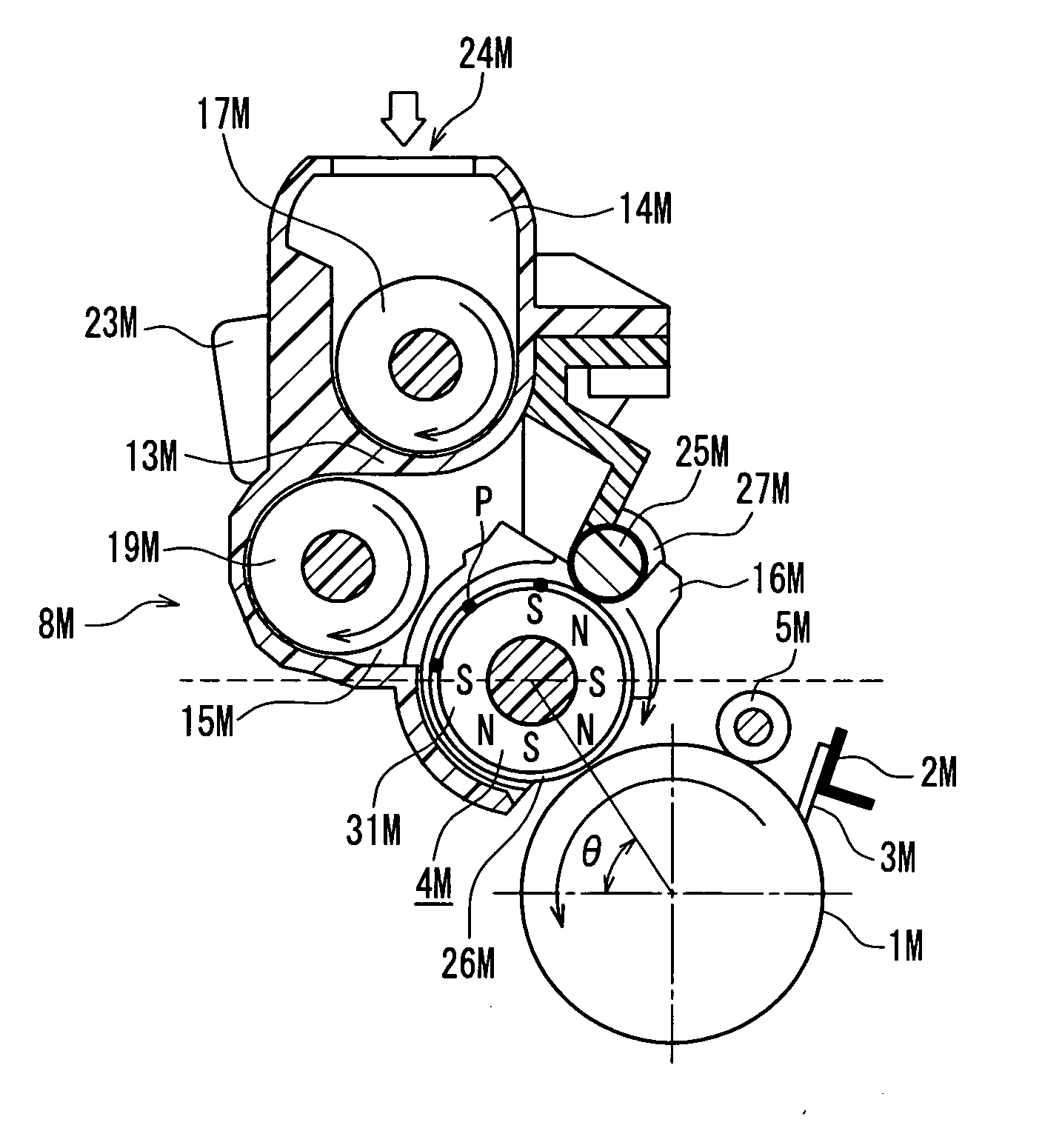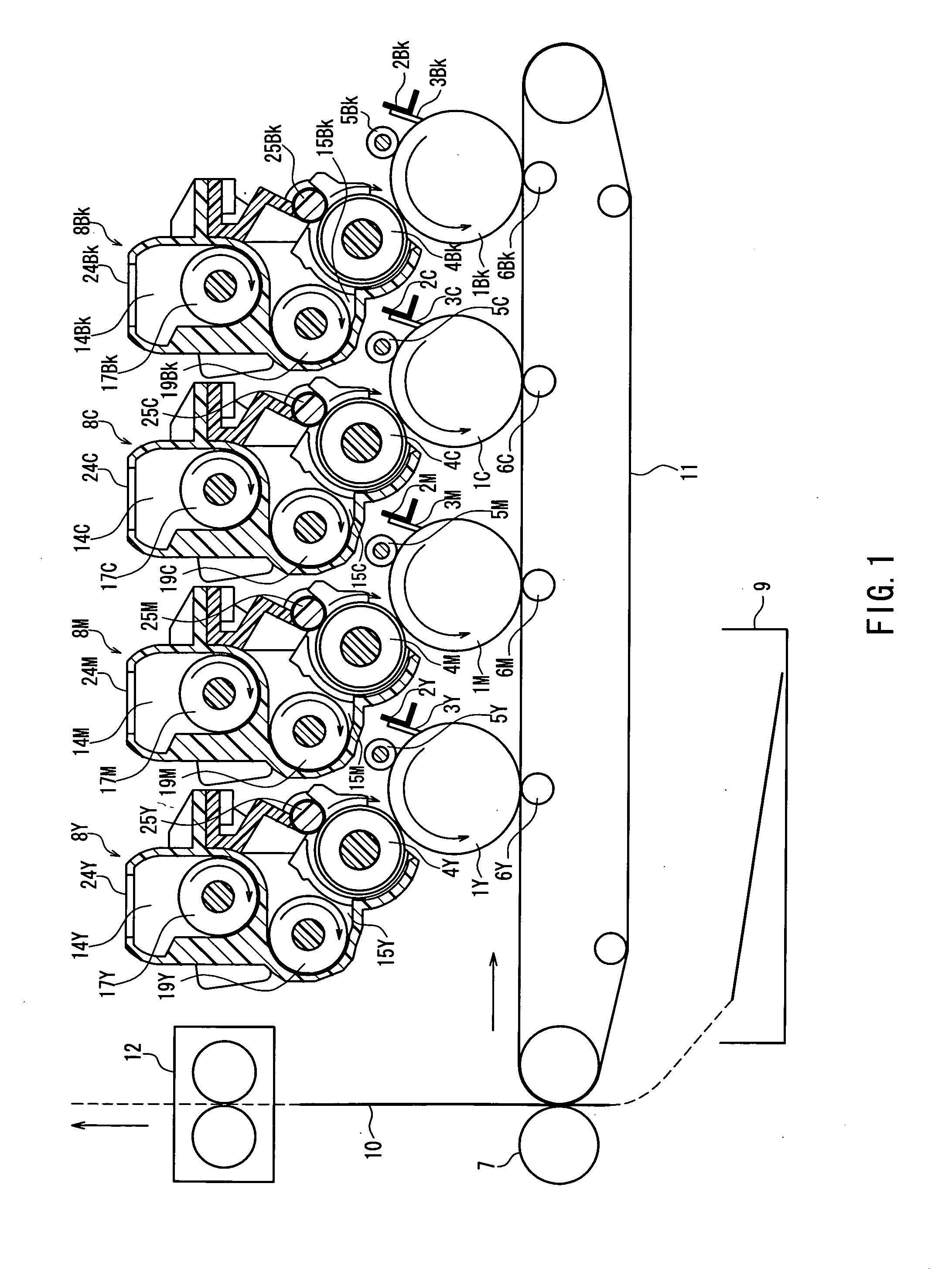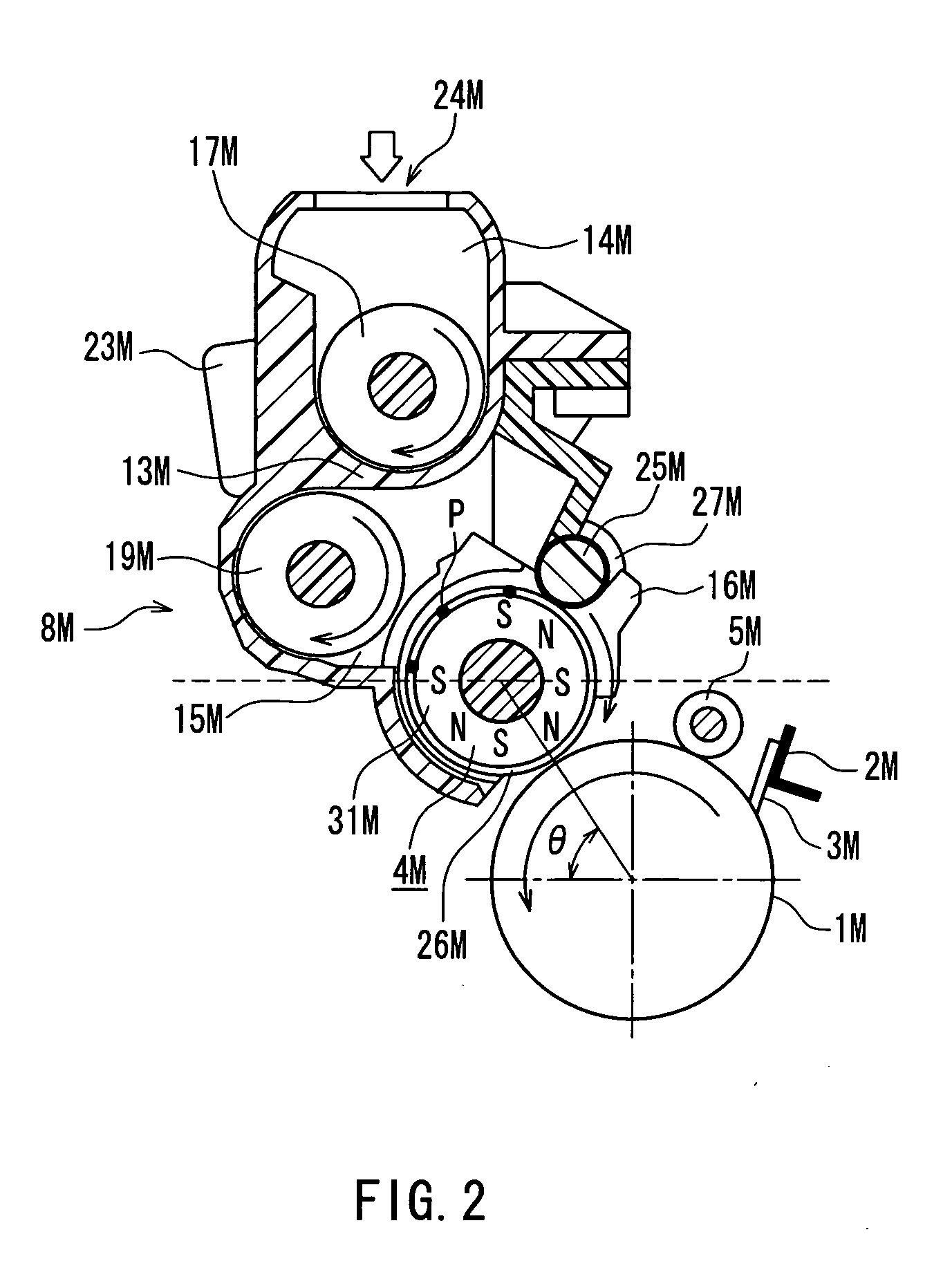Developing apparatus
a technology of developing apparatus and developing body, which is applied in the direction of electrographic process apparatus, instruments, optics, etc., can solve the problems of increasing the size of the apparatus, generating density unevenness, and density unevenness, and achieves the effects of small size, light weight and high image quality
- Summary
- Abstract
- Description
- Claims
- Application Information
AI Technical Summary
Benefits of technology
Problems solved by technology
Method used
Image
Examples
embodiment 1
[0065]FIG. 1 is a cross-sectional view schematically showing a configuration of an entire image forming apparatus according to Embodiment 1 of the present invention, and FIG. 2 is a cross-sectional view schematically showing a relevant part of an image forming unit according to Embodiment of the present invention. FIG. 3 is an external perspective view showing a developing apparatus according to Embodiment 1 of the present invention, and FIG. 4 is a cross-sectional view showing a relevant part of the developing apparatus of FIG. 3, seen from the direction of arrow A. FIG. 5 is a cross-sectional view taken along line B-B of FIG. 4, FIG. 6A is an enlarged view showing a part C of FIG. 4, and FIG. 6B is a cross-sectional view taken along line D-D of FIG. 6A. FIG. 7 is a chart or a graph showing magnetic pole arrangement and a distribution of magnetic flux density in a development roller according to Embodiment 1 of the present invention. In FIG. 5, a photosensitive drum that is omitted...
embodiment 2
[0148] Developing apparatuses were manufactured by modifying the developing apparatus of Embodiment 1 so as to have a ratio of (mg0×l×v) / M0 fixed to be 0.025, and center distances d of 13.8 mm, 14.3 mm, 14.8 mm, 15.0 mm, 15.3 mm, 17.0 mm, 19.0 mm, 20.0 mm, 21.0 mm and 25.0 mm, respectively. Then, respective image density differences ΔIDg were measured. FIG. 10 shows the results. As shown in FIG. 10, it is found that, when the center distance d was not more than 2r+R (r=6 mm, R=7 mm, and thus, 2r+R=19 mm), the image density difference ΔIDg was not more than 0.025, and thus the ghost was also improved.
[0149] Moreover, by using plural developing apparatuses that were manufactured similarly to the above, unevenness (i.e., variation) a of the image density on a whole solid image was evaluated. The evaluation of the unevenness a of the image density on the whole solid image was performed by measuring a standard deviation of image densities ID at plural measurement points, after printing ...
embodiment 3
[0152] Evaluation of the ghost was performed by varying the volume resistivity of the carrier of Embodiment 1 in the electric field of 2 kV / cm to five levels of 1×106 Ω·cm, 1×108 Ω·cm, 1×1010 Ω·cm, 1×1012 Ω·cm, 1×1014 Ω·cm and 1×1016 Ω·cm. That is, the image density differences ΔIDg were measured, while varying the volume resistivity of the carrier in the electric field of 2 kV / cm. FIG. 12 shows the results. As shown in FIG. 12, it is found that, when the volume resistivity of the carrier was not more than 1×1010 Ω·cm, the image density difference ΔIDg was not more than 0.01, and thus the ghost was further improved. It is also found that, in the measurement with a reflection densitometer RD914 manufactured by Macbeth, the image density difference ΔIDg was substantially zero, and a uniform image could be obtained. This is thought to be because, since electric charge generated by frictional charging with the toner was not accumulated in the carrier, an image force of the carrier appli...
PUM
 Login to View More
Login to View More Abstract
Description
Claims
Application Information
 Login to View More
Login to View More - R&D
- Intellectual Property
- Life Sciences
- Materials
- Tech Scout
- Unparalleled Data Quality
- Higher Quality Content
- 60% Fewer Hallucinations
Browse by: Latest US Patents, China's latest patents, Technical Efficacy Thesaurus, Application Domain, Technology Topic, Popular Technical Reports.
© 2025 PatSnap. All rights reserved.Legal|Privacy policy|Modern Slavery Act Transparency Statement|Sitemap|About US| Contact US: help@patsnap.com



